#Rapid CNC Prototype
Text
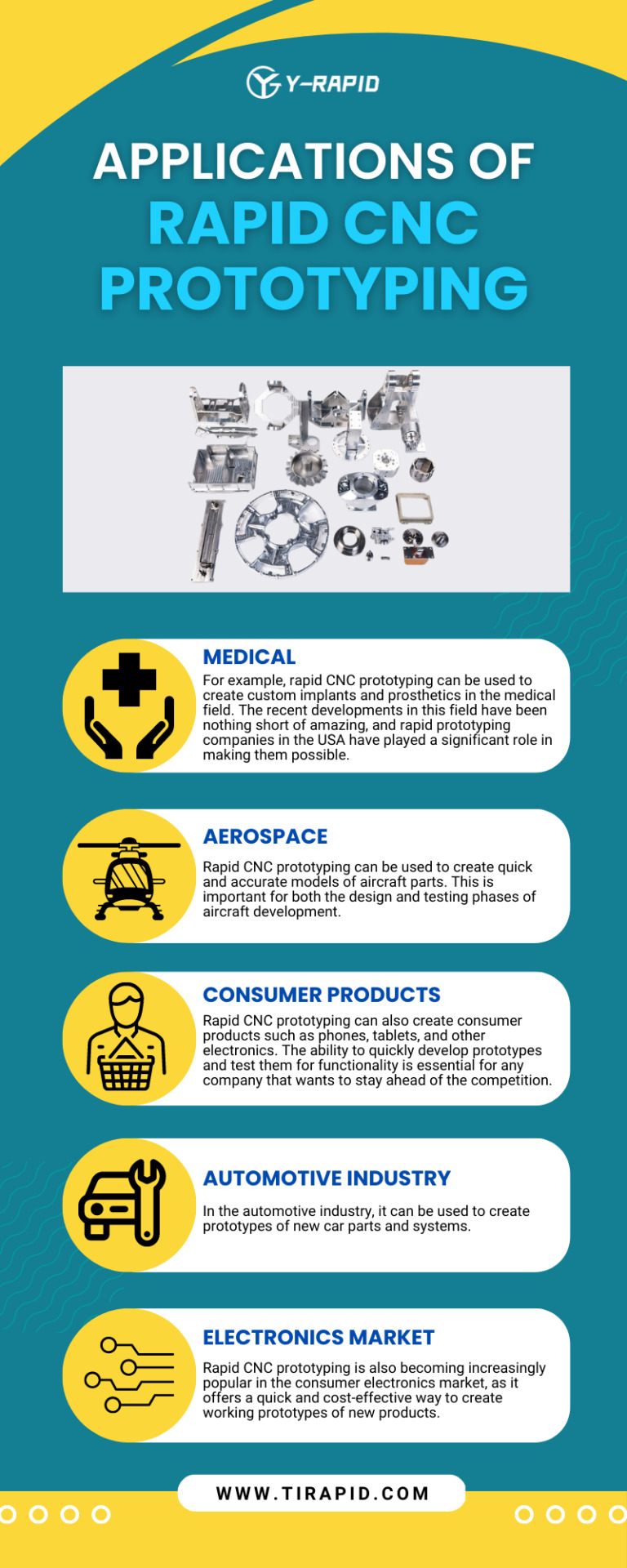
Applications of Rapid CNC Prototyping
CNC machine Rapid prototyping is a versatile technology used for various applications.
1. Medical
2. Aerospace
3. Consumer products
4. Automotive Industry
5. Electronics market
View more - https://www.tirapid.com/rapid-prototyping/
0 notes
Text
The Importance of High-tech Rapid Prototyping
In the industrial industry, precision is not only desirable—it is essential. Consider a situation in which parts of a jet engine are even marginally machined incorrectly or misaligned. The repercussions can be disastrous and might cause the engine to fail in midair. Precision becomes the key to success in sectors like aerospace, automotive, and medical where safety and dependability are non-negotiable. Put simply, it's the capacity to manufacture parts or components that precisely conform to given dimensions, tolerances, and quality requirements. It takes state-of-the-art equipment, painstaking attention to detail, and highly competent operators to achieve this degree of accuracy. This is the sweet spot for Precision CNC Machining.
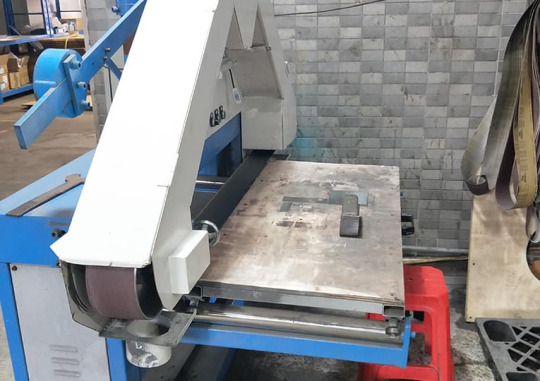
So how precisely can CNC machining accomplish such high precision levels?
Computerized Control: Advanced computer software is the brains of CNC machining, translating digital design requirements into exact motions and orders for the milling tools. This removes the possibility of human error and guarantees the highest level of precision in each cut, drill, and mill.
Superior Quality Equipment: Modern spindles, tools, and cutting implements that are designed to provide exact results are standard on CNC machines. These devices may operate at extremely tight tolerances, which are sometimes expressed in microns, guaranteeing an accurate reproduction of even the minutest features.
Consistency: The ability of CNC machining and High-tech Rapid Prototyping to manufacture similar components with little variance is one of its main advantages. A machine program that has been developed and tuned may be repeated endlessly with reliable outcomes. In fields where stability and dependability are critical, this degree of constancy is priceless.
Advanced Techniques: Multi-axis milling, turning, EDM (Electrical Discharge Machining), laser cutting, and other state-of-the-art methods are all included in CNC machining. With unmatched accuracy and efficiency, manufacturers can handle complicated geometries and materials thanks to these procedures.
Quality Assurance: CNC systems frequently include integrated quality control mechanisms including automated inspections, feedback loops, and real-time monitoring in addition to accurate machining. This reduces waste and rework by guaranteeing that any deviations from the intended standards are quickly identified and fixed. It is impossible to exaggerate the value of accuracy in production. Precision by Precision CNC Machining Manufacturer plays a crucial role in today's competitive economy, as it ensures everything from satisfying regulatory requirements and consumer expectations to assuring product performance and dependability.
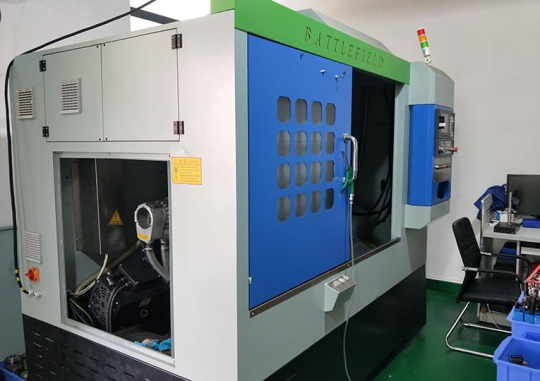
Follow our Facebook and Twitter for more information about our product
#High-tech Rapid Prototyping#Precision CNC Machining#Precision CNC Machining Manufacturer#CNC Machining Manufacturer Company
2 notes
·
View notes
Text
Maintenance Tips for Your CNC Turning Machine by MechPlus China
As a leading CNC turning machine manufacturing, MechPlus China understands the importance of proper maintenance to ensure precision and efficiency. Regular upkeep not only extends the machine's lifespan but also maximizes productivity and quality. Here are essential maintenance tips from MechPlus China to keep your CNC turning machine running smoothly and efficiently.
Keeping your CNC turning machine in top condition is crucial for optimal performance. Regular maintenance not only extends the machine's lifespan but also ensures precision and efficiency in your operations. Here are essential maintenance tips to keep your CNC turning machine running smoothly.
Daily Inspection and Cleaning
Start each day with a thorough inspection of your CNC turning machine. Check for any signs of wear and tear, and ensure all components are in good working order. Clean the machine daily to remove any debris, chips, and coolant residue. This prevents buildup that can affect performance and accuracy.
Lubrication
Proper lubrication is vital for the smooth operation of your CNC turning machine. Lubricate all moving parts as recommended by the manufacturer. This includes the spindle, guideways, and ball screws. Regular lubrication reduces friction, prevents wear, and extends the machine’s life.
Coolant Maintenance
Maintaining the coolant system is essential for the longevity of your CNC machine. Regularly check the coolant level and concentration. Replace or refill the coolant as needed. Also, clean the coolant tank and filters to avoid contamination that can damage the machine and workpieces.
Alignment and Calibration
Ensure that your CNC turning machine is properly aligned and calibrated. Misalignment can lead to inaccuracies in your machining processes. Regularly check and adjust the machine’s alignment and calibration according to the manufacturer’s guidelines. This ensures precision in your operations.
Check Electrical Components
Inspect the electrical components of your CNC turning machine regularly. Look for any loose connections, worn-out wires, or faulty switches. Address any electrical issues immediately to prevent machine downtime and potential safety hazards.
Monitor Machine Vibration
Excessive vibration can lead to poor machining quality and damage to your CNC turning machine. Monitor the machine for any unusual vibrations or noises during operation. Identify and address the source of the vibration to maintain optimal performance.
Regular Software Updates
Keep your CNC machine’s software up to date. Manufacturers often release updates that improve functionality and fix bugs. Regularly updating the software ensures your machine operates efficiently and takes advantage of the latest technological advancements.
Tool Maintenance
Regularly inspect and maintain the cutting tools used in your CNC turning machine. Sharp and well-maintained tools are crucial for high-quality machining. Replace worn or damaged tools promptly to ensure precise and efficient operation.
Preventive Maintenance Schedule
Implement a preventive maintenance schedule for your quick response machining tool. Follow the manufacturer’s recommended maintenance intervals for all components. Regular preventive maintenance helps identify potential issues before they become major problems, reducing downtime and repair costs.
Training and Safety
Ensure that all operators are properly trained in the maintenance and operation of the CNC turning machine. Regular training updates and adherence to safety protocols are crucial for preventing accidents and ensuring smooth operations.
Document Maintenance Activities
Keep detailed records of all maintenance activities performed on your CNC turning machine. Documenting maintenance helps track the machine’s condition over time and provides valuable information for troubleshooting and repairs with all types of customized machining parts.
In conclusion, regular maintenance of your CNC turning machine is essential for its longevity and performance. By following these tips, you can ensure your machine operates efficiently, reducing downtime and improving the quality of your machining processes. Implement these maintenance practices to keep your CNC turning machine in optimal condition.
#Prototyping solutions#SLA Rapid Prototyping manufacturing#SLS Rapid machining manufacturing#5 Axis CNC machining manufacturing#3D metal printing manufacturing
1 note
·
View note
Text
What You Need to Know About Powder Coating Finish and its benefits to CNC metal parts?
Powder coating is a widely used finishing method that has become more popular in a variety of sectors. It provides a long-lasting, superior finish that makes metal items look better and last longer. Whether you work in home renovation, manufacturing, or vehicle repair, knowing the subtleties of powder coating can help you make wise choices. All the information you want regarding powder coating finish is provided here.
Powder coating is a popular finishing method for CNC metal parts. It provides a tough, high-quality finish that improves the look and durability of metal components. The process involves applying a dry powder to the parts' surface and then curing it with heat to form a protective layer. This coating resists corrosion, chipping, and fading, making it ideal for industries like automotive, aerospace, and industrial equipment. Choosing powder coating for your CNC machined parts ensures they look professional and last longer. Learn more about the uses of powder coating for your CNC parts here.
What is Powder Coating?
It is a dry method used to finish metal surfaces. It involves applying a fine powder made of resin, pigment, and additives. This powder is given an electric charge and sprayed onto the metal. Then, the coated metal is heated in an oven, which melts the powder and creates a smooth, hard layer.
Types of Powder Coating
Powder coatings are made of thermoplastics: these coatings can be melted and reformed when heated again. They are frequently utilized in applications needing great impact resistance because of their reputation for toughness.
Advantages of Powder Coating
Durability: Compared to standard paint finishes, powder-coated surfaces are tougher and more resilient to wear, chipping, scratching, and fading. They are therefore ideal for items that are subjected to extreme temperatures or frequent use.
Environmental Benefits: In contrast to liquid paint, powder coating releases very little volatile organic compound (VOC) into the atmosphere and doesn't include any solvents. It is therefore a more environmentally friendly choice.
Efficiency: Powder-coated surfaces are stronger and more resistant to chipping, scratching, fading, and wear than traditional paint finishes. This makes them perfect for products that are heavily used or are exposed to the weather.
Variety of Finishes: Powder coating offers a wide range of colors and textures. Powder coating can create a wide range of looks, from glossy to matte finishes, and even special textures like metallic or pearlescent. It can meet almost any design need.
Applications of Powder Coating
Powder coating is used in many industries. In the automotive industry, it's used for wheels, bumpers, and other parts because it's durable and looks good. In architecture and construction, powder-coated aluminum and steel are often used for both structure and decoration. Household appliances, furniture, and outdoor equipment also get a strong, lasting finish from powder coating.
Preparation and Application Process
Surface Preparation: Proper surface preparation is key to a good powder coating finish. The metal must be thoroughly cleaned to remove oils, dirt, and rust. This often involves sandblasting, chemical etching, or washing with degreasers.
Application: The electrostatic spray deposition (ESD) process applies the powder. The powder particles are given an electric charge, making them stick to the grounded metal surface. This ensures even coverage, even on complex shapes.
Curing: The coated object is placed in a curing oven with temperatures between 325- and 450-degrees Fahrenheit. The heat melts the powder, creating a smooth, even coating that hardens into a tough finish.
Maintenance and Care
An effective powder coating finish depends on proper surface preparation. To get rid of rust, oil, and debris, the metal surface must be properly cleansed. This frequently entails degreaser cleaning, chemical etching, or sandblasting.
Why Use Powder Coating For Your CNC Parts?
Powder coating is better than spray painting because it creates much less waste, about 95% less, thanks to its electrostatic method. It also forms a strong bond when heated, making it harder for damage like chipping and breaking to occur. Powder coating can also be applied in thicker layers. Its advantages include being affordable, making products tougher and longer lasting with minimal upkeep, being environmentally friendly, and making items look better.
In a nutshell, Powder coating is a great choice for a durable, environmentally friendly, and adaptable finish. It's widely used across different industries because it's effective and long-lasting. Whether you're coating car parts, household items, or machinery, powder coating provides a high-quality finish that endures. Understanding its process, benefits, and maintenance will ensure you get the best results from this advanced finishing method.
About the Author:
HLH is a special blend of expertise from both the West and the East. It was started by Vader Yu from China and Director James Murphy from the UK. At HLH, we provide a wide range of prototyping and custom low-volume manufacturing solutions such as rapid injection molding, CNC machining, 3D printing, sheet metal fabrication and more. If you would like to receive a free quote for these services, you can email us at [email protected] or contact us at www.hlhrapid.com
Do you want to learn more about our Instant Quote Tool? Upload your CAD file here; www.hlhrapid.com
0 notes
Text
GD prototyping Precision five-axis CNC machining, can manufacture high-precision,complex and multi-structure plastic and metal parts.
#5 axis machining#cncmachining#cnc milling services#precision machining#cnc machining services#prototyping#rapid prototyping
0 notes
Text
📦Unlocking Business Opportunities: ARRK’s Comprehensive Services📦
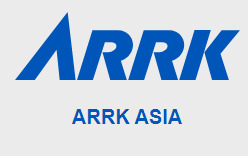
ARRK is a global company offering comprehensive product development services from design, and prototype to production. Our innovative technologies and engineering expertise help our customers deliver the highest quality products to the market.
📈About ARRK: Get the best Product Development Services 📈
ARRK is a global company offering comprehensive product development services from design, and prototype to production. Our innovative technologies and engineering expertise help our customers deliver the highest quality products to the market.
ARRK offers a wide range of services aimed at supporting businesses in bringing their products from conception to market. These services include:

3D PRINTING
Our 3D printing service and additive manufacturing solutions cover any requirement with the help of advanced technology and a variety of high-quality materials, as well as our signature design and engineering expertise. Our capability is a prototype ready for evaluation or production, and the differentiation relies on the various processes we manage.
VACUUM CASTING
Easily reproduce your design with the vacuum casting process by using a 3D printed or machined master to create RTV silicone rubber molds. This is a cost-effective solution with consistent prototypes, be it in small quantities or in the region of hundreds.
CNC MACHINING
Computer Numerical Control (CNC) machining is when software controls machinery to make precision cuts by removing material from a workpiece to create unique parts. Plastic and metal components can be prototyped or produced with our medium or low-volume CNC machining
MICROWAVE MOLDING
Microwave Molding is a quick manufacturing process that works by micro pelletizing a thermoplastic resin to create prototypes. The fine particles are heated and melted in a silicone mold similar to our Vacuum Casting solution. The result is a lot faster and ready for the evaluation process.
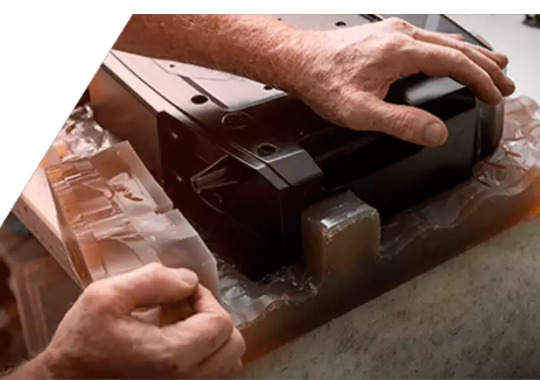
By emphasizing their global reach, comprehensive services, innovative technologies, and engineering expertise, you convey a strong message about their commitment to assisting customers in delivering top-tier products. It's concise and highlights ARRK's strengths effectively.
LIGHTING PROTOTYPE
As prototyping experts, we rely on our engineering skills and manufacturing technology to make lighting prototype models that reach high-quality standards and accomplish design guidelines. Optics, electronics, mechanics, and analysis convene to produce excellence.
INJECTION MOLDING
Our high to low-volume injection molding services allow companies to get as many custom parts as needed since this process’s main features are repeatability and competitiveness. Injection molding works by injecting melted plastic into a mold, cooling it afterward, and solidifying it. It’s generally a mass-production solution. If you want to get more information about product development, you can navigate to this website.

DIE CASTING
Die casting is a process that inserts molten metal under high pressure into reusable molds called dies to produce high-quality components for multiple purposes. ARRK can create complex, accurately dimensioned parts with this low-cost and effective solution as a die casting manufacturer.
By emphasizing their global reach, comprehensive services, innovative technologies, and engineering expertise, you convey a strong message about their commitment to assisting customers in delivering top-tier products. It's concise and highlights ARRK's strengths effectively.
💼 Connect with Us Today! 💼
From concept to creation, ARRK is your one-stop destination for comprehensive product development services. Reach out to us via our official channels:
🏢 Business Address: Block E-10-01, Oasis Ara Damansara, Jalan PJU 1A/7, Ara Damansara, Petaling Jaya, Selangor, 47301 Malaysia
📞 Phone: +60 377347692
🌐 Website: ARRK Official Website
🕘 Hours of Operation: Monday-Friday: 8:30 am-5:30 pm
Social Media: Don't forget to follow us on social media for the latest updates, tips, and success stories:
👍 Facebook: ARRK Business
🔗 LinkedIn: ARRK
🕊️ Twitter: ARRK
Choose ARRK and embark on a journey where innovation meets precision, ensuring your ideas are not just realized, but perfected at every stage of the product development process.
#rapid manufacturing company#rapid prototyping and manufacturing#3d printing prototype service#cnc cutting machine supplier
1 note
·
View note
Text
Injection Molding Redefining CNC Machining
Unleashing Personalization: Injection Molding Redefining CNC Machining
The Intricate Dance of Precision and Customization
In the dynamic landscape of manufacturing, where precision meets personalization, CNC machining has emerged as a cornerstone
technology. As the gears of global industries turn, customization has become not just a luxury but a necessity. The question that
echoes in the halls of innovation is, how does Injection Molding technology empower the creation of truly personalized products?
Customization in the Era of Smart Manufacturing: Injection Molding Technology Empowering Personalized Products has become more
than a mere phrase; it's a paradigm shift that propels businesses like mine, CNC MACHINING, into the forefront of cutting-edge manufacturing.
The Powerhouse of Adaptability: Injection Molding Unveiled
In the bustling streets of technology, where every product screams for uniqueness, CNC machining, coupled with injection molding,
takes center stage. Injection molding, a technique that REGO, my B2B company based in China, specializes in, is not just a manufacturing
process; it's a dynamic force enabling the crafting of bespoke components.
Imagine a world where your products aren't just items on a shelf but reflections of individuality. Mark Sheng, our discerning client in Canada,
values quality above all. For him, each component isn't just a piece; it's a testament to the precision and care invested in its creation. Our 5
production lines and 55 dedicated employees ensure that every piece meets not just industry standards but exceeds the expectations of clients.
CNC machining, bolstered by injection molding, is the bridge between the generic and the tailored. It's not about mass production; it's about
the art of crafting products that seamlessly fit into the intricate tapestry of diverse industries—be it aerospace, automotive, medical, or electronics.
The Canvas of Customization: Who Holds the Brush?
In this era where everyone seeks a unique stroke in the canvas of manufacturing, the question arises—how does customization become
the hallmark of smart manufacturing? It's not merely about producing goods; it's about sculpting experiences. The answer lies in the ability
to mold not just plastic but ideas, dreams, and necessities.
Accessibility and affordability have transformed CNC machining from a specialized tool for industrial giants to a playground for small
businesses and individuals. The democratization of technology has made it possible for anyone, regardless of expertise, to wield the power
of CNC machines. The era of personal projects, prototypes, and custom parts is upon us, and CNC machining is the vehicle driving this revolution.

Navigating the Maze: Addressing Pain Points in Customization
As the path to personalization unfolds, challenges emerge. REGO understands the pain points of clients—the frustration of low efficiency,
the anxiety of delayed deliveries, and the fear of fraudulent certifications. It's not enough to offer customization; it's about delivering it
seamlessly, efficiently, and with unwavering reliability.
Our commitment extends beyond the production lines; it encompasses quality control, streamlined certifications, efficient logistics, and
transparent payment methods. Mark Sheng doesn't just receive a product; he receives an assurance—an assurance of quality, trust, and timely delivery.
The Symphony of Solutions: Exhibition Platforms and Online Avenues
How does one broadcast the symphony of customization to the world? The answer lies in the harmony of offline and online promotion.
REGO doesn't just showcase products in exhibitions; it extends its reach through online platforms like Alibaba and Google. It's about being
where the eyes of industries and individuals converge, offering a glimpse into the world where CNC machining and injection molding dance in unison.
Questions related to "Customization in the Era of Smart Manufacturing: Injection Molding Technology Empowering Personalized Products"
How does CNC machining redefine the boundaries of customization?
What role does injection molding play in the era of smart manufacturing?
How has the democratization of technology impacted the accessibility and affordability of CNC machines?
More related questions
What are the key factors influencing clients like Mark Sheng to prioritize quality over price?
How does REGO address the pain points of low efficiency, delayed deliveries, and fraudulent certifications?
Conclusion: Crafting Tomorrow, Today
In the symphony of manufacturing, where precision and personalization dance hand in hand, REGO stands not just as a supplier but as a maestro. The fusion of CNC machining and injection molding isn't just a process; it's a journey—a journey into the heart of smart manufacturing where products aren't just created; they are crafted.
As the sun sets on the horizon of traditional manufacturing, the dawn of customization rises. In this era, Our clients, discerning and demanding, the need for a reliable partner like REGO becomes paramount. The legacy of tomorrow is crafted today, in the hum of CNC machines and the precision of injection molding—a legacy that resonates with the heartbeat of every personalized product.
0 notes
Text

Rapid CNC Machining Services in the USA by Global Tech Ventures
Global Tech Ventures offers you Rapid CNC Machining Services in the USA with many innovative features. With the help of a team of skilled engineers, they create high-quality and precise plastic prototypes. Connect with Global Tech Ventures today.
0 notes
Text
Your Trusted Injection Molding Supplier - Sanwo Rapid
Sanwo Rapid is your trusted injection molding supplier, delivering top-quality solutions with rapid turnaround times. Our expertise and state-of-the-art technology ensure efficient and precise injection molding services. Explore our capabilities and partner with a supplier dedicated to bringing your ideas to life.
0 notes
Text
CNC Car Parts: Revolutionizing Automotive Manufacturing with Precision and Efficiency
Introduction
In the ever-evolving world of automotive manufacturing, the demand for high-quality, precise, and efficient production processes has become paramount. The advent of advanced technologies, such as online machining, SLA rapid prototyping, aluminum casting in China, CNC prototypes, and small metal parts fabrication, has brought about a paradigm shift in the production of car parts. This article explores the significance of CNC (Computer Numerical Control) in the automotive industry and how it has revolutionized the manufacturing of car parts.
Online Machining: Streamlining Production Processes
Online machining, also known as CNC machining, has emerged as a game-changer in car part manufacturing. With online machining, manufacturers can create intricate and complex car parts with exceptional precision and speed. By utilizing computer-aided design (CAD) software, engineers can develop 3D models that are then translated into machine instructions for CNC machines.
The CNC machines, equipped with high-speed rotating tools, cut, drill, and shape raw materials, such as aluminum, steel, and alloys, into precise car parts. The automated nature of online machining not only enhances accuracy but also reduces the risk of human errors, resulting in improved quality control.
SLA Rapid Prototyping: Accelerating Innovation
SLA (Stereolithography) rapid prototyping is another technology that has significantly impacted the automotive industry. It enables the creation of quick and cost-effective prototypes for car parts. Using SLA, manufacturers can transform digital designs into physical models by using a specialized machine that cures liquid resin layer by layer, producing a solid object.
The application of SLA rapid prototyping allows automotive designers and engineers to iterate and test their designs more efficiently. This iterative approach helps identify and rectify flaws or design issues at an early stage, saving both time and resources. By accelerating the prototyping process, SLA technology fosters innovation and drives the development of cutting-edge car parts.
Aluminum Casting China: Cost-Effective and Versatile
Aluminum casting in China has gained prominence as a cost-effective and versatile method for producing car parts. Aluminum, with its lightweight properties and excellent thermal conductivity, is an ideal material for automotive applications. China, with its well-established manufacturing infrastructure, offers competitive advantages in terms of cost, quality, and production capacity.
By utilizing aluminum casting techniques, manufacturers can create complex shapes and structures that would be challenging to achieve with traditional methods. The process involves pouring molten aluminum into pre-designed molds, allowing for the production of intricate car parts with high dimensional accuracy. Furthermore, aluminum casting provides excellent surface finishes and is highly resistant to corrosion, making it suitable for various automotive components.
CNC Prototypes: Transforming Design Concepts into Reality
CNC prototypes play a pivotal role in the development of car parts. Before moving into full-scale production, manufacturers often create prototypes to validate the design, functionality, and performance of the intended car parts. CNC machines excel in producing accurate prototypes that closely resemble the final product.
By using CNC prototypes, automotive engineers can evaluate the form, fit, and function of car parts, ensuring they meet the desired specifications. Any necessary modifications or improvements can be identified and implemented at this stage, minimizing the risk of costly errors during mass production.
Small Metal Parts Fabrication: Precision at Scale
The production of small metal parts is a critical aspect of automotive manufacturing. These components, although small in size, play a vital role in the overall performance and functionality of a vehicle. CNC machining enables the precise fabrication of small metal parts, ensuring that they meet the stringent requirements of the automotive industry.
Whether it's engine components, brackets, connectors, or fasteners, CNC machining can accurately produce small metal parts with high repeatability. The ability to manufacture these parts at scale while maintaining consistent quality is a significant advantage of CNC technology.
Conclusion
The use of CNC technology has had a significant impact on the overall cost of manufacturing CNC car parts. The integration of online machining, SLA rapid prototyping, aluminum casting in China, CNC prototypes, and small metal parts fabrication has revolutionized the manufacturing of car parts. These advanced technologies offer enhanced precision, efficiency, and cost-effectiveness in the production process. As the automotive industry continues to evolve, the utilization of CNC in car part manufacturing will be instrumental in meeting the demands for innovation, quality, and performance in vehicles worldwide.
#online machining#SLA rapid prototyping#aluminum casting china#CNC prototypes#CNC car parts#small metal parts fabrication
0 notes
Text
0 notes
Text
The Potential of High-Tech Rapid Prototyping
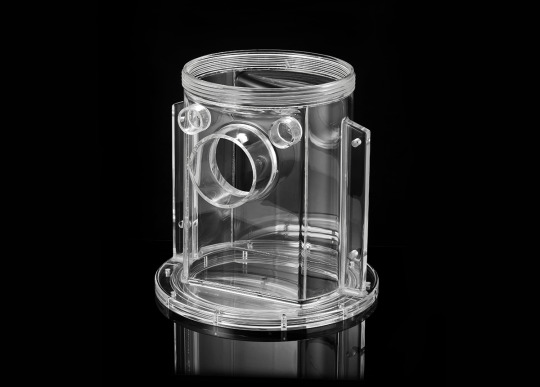
High-tech Rapid Prototyping has become a game-changer in the rapidly changing fields of innovation and technology, altering the way things are planned, developed, and introduced to the market. This dynamic process, which promotes creativity, shortens time-to-market, and ultimately drives unmatched innovation, has emerged as a key component for companies looking to maintain their leadership positions in their respective fields.
The Innovation-Promoting Technologies
The 3D Printing Process
3D printing is a key component of the fast prototyping revolution because it allows digital models to be layered into actual items. This technology has made it easier to produce intricate, personalized prototypes and greatly reduced design cycles.
Machining using computer numerical control (CNC)
Prototypes made of different materials may be accurately cut, shaped, and assembled with the help of computer-controlled gear thanks to CNC machining from CNC Machining Manufacturer. This adaptable technique works especially well for creating prototypes with intricate geometries and great accuracy.
Using Injection Molding
Rapid prototyping is greatly aided by injection molding, a process that is frequently employed in mass manufacturing. The appearance, feel, and functioning of the final product are accurately represented by injection-molded prototypes.
Benefits of Rapid High-Tech Prototyping
Quicker Iterations in Design
Design revisions may be completed quickly and affordably using rapid prototyping. Instead of weeks or months, designers may test several iterations of a product, improve functionality, and fix bugs in a matter of days.
Economy of Cost
High-tech fast prototyping decreases the upfront expenses associated with traditional manufacturing methods by eliminating the need for expensive equipment and molds. This makes it possible for companies to test concepts more affordably before committing to large-scale manufacturing.
Improved Cooperation
Improved cross-functional team communication is facilitated by prototyping. A prototype may be physically interacted with by stakeholders, who can offer insightful input and encourage cooperation between end users, engineers, and designers.

Sensitivity to the Market
Being able to react swiftly to customer input and industry developments is critical in businesses that move quickly. Businesses may maintain their agility, adjust to shifting customer needs, and obtain a competitive advantage in the market by using high-tech fast prototyping and Precision CNC Machining.
Follow our Facebook and Twitter for more information about our product.
#High-tech Rapid Prototyping#Precision CNC Machining#Precision CNC Machining Manufacturer#CNC Machining Manufacturer Company#Precision CNC Machining Manufacturer Company
2 notes
·
View notes
Text
CNC machining and manufacturing process of scroll parts used in new energy industry
0 notes
Text
Exploring CNC Machining in Prototyping and CNC Turning: Understanding How to Use It and Its Limitations
Why is CNC machining considered an important manufacturing technology, and how much impact does it make on various sectors' production and prototype processes?
What are the various methods in this field—like CNC turning—and what are the particular uses, benefits, and drawbacks of each one?
These are some of the major questions to maximize the use of CNC machining in prototype, it is essential to be aware of these prior to the product development. Check these as we explore CNC machining, its usages and limitations in CNC turning and prototyping.
CNC Machining's Flexibility in Prototyping:
Prototyping has never been more adaptable because of CNC machining, which gives designers the ability to convert ideas quickly and precisely into working prototypes. CNC machining makes it easier to produce exact features, complicated designs, and personalized parts by using computer-controlled devices. Such flexibility provides designers the ability to rapidly check ideas and explore with different design versions.
How is CNC machining used in prototyping?
CNC machining is great for making quick changes to prototypes. Designers can test lots of different designs fast and keep improving them. Because CNC machines work automatically, it makes the prototyping process faster and helps products get developed quicker.
How does CNC machining handle different shapes?
CNC machines can make all sorts of shapes, from basic to really detailed ones, with accuracy. This is very useful in prototyping when designs are often complex.
What kinds of materials can CNC machining work with?
In CNC machining, you can use a lot of different materials like metal, plastic, and other stuff. This lets designers pick the best material for their prototypes, so they can make sure their prototypes have the right strength and work the way they want them to.
Despite all its advantages, CNC machining has limitations that could affect its efficiency in certain situations. Let us look into these constraints to have a better understanding of how to effectively go through CNC machining as understanding its limitations is important.
Here are some of the Limitations in Prototyping:
Cost Considerations: While CNC machining offers rapid prototyping capabilities, it can be relatively expensive, particularly for low-volume production runs. Material costs, machine setup time, and programming expenses contribute to the overall cost of CNC prototyping.
Design Constraints: Even though CNC machining has many uses, designers must stick to certain guidelines. It is important to consider how tools can reach parts, how parts are positioned, and how exact the machine is. Designers must consider these guidelines to ensure that their prototypes can be built without issues or additional costs.
Making Precise Prototypes with CNC Turning: Using CNC turning to create prototypes is similar to using a special machine that shapes round parts by spinning them against a sharp tool. It's part of CNC machining, which involves computers controlling machines. While CNC turning shares similarities with other CNC methods, it has its own advantages and disadvantages when making prototypes.
Making Rotating Parts Easily: CNC turning is a good method at making parts that spin, like shafts, pins, and bushings, with great accuracy and speed. This is helpful when we're making prototypes with lots of spinning parts.
Material Removal Rates: Compared to other machining techniques, CNC turning boasts impressive material removal rates, enabling rapid fabrication of cylindrical components. This efficiency accelerates prototyping timelines and enhances productivity.
Surface Finish and Tolerance Control: CNC turning delivers superior surface finishes and tight tolerance control, ensuring that prototypes meet exact specifications. This precision is essential for functional prototypes that require precise fits and smooth surfaces.
But here are few limitations in CNC Turning that must be taken care as well:
Limitations to Rotational pieces: CNC turning works effectively for making rotational components, however it can only be used on pieces that have rotational symmetry. Non-rotational features and complex designs may call for additional machining steps or other production methods.
Limitations on Tool Access and Design: CNC turning has limitations on tool access and component mechanics, especially for features that are far from the rotational line. To lessen these constraints, designers must carefully analyze component position and tooling methods.
CNC machining, including CNC turning, is a valuable tool for prototyping, allowing designers to create precise models efficiently. While it offers benefits like quick design changes, material flexibility, and complex shapes, it also has drawbacks such as costs and design limitations. Understanding how CNC machining works in prototyping enables designers to maximize its benefits, driving innovation and speeding up product development.
At HLH Rapid, we have CNC services perfect for quickly making prototypes and small batches of parts.
Learn more about our factory that has more than 150 advanced machines like mills, lathes, and grinders, ensuring we can make parts exactly how you would want them. Plus, we check the quality at every step to guarantee the best results, drop an email at [email protected] or simple visit our site; https://hlhrapid.com/get-a-quote/
0 notes
Text
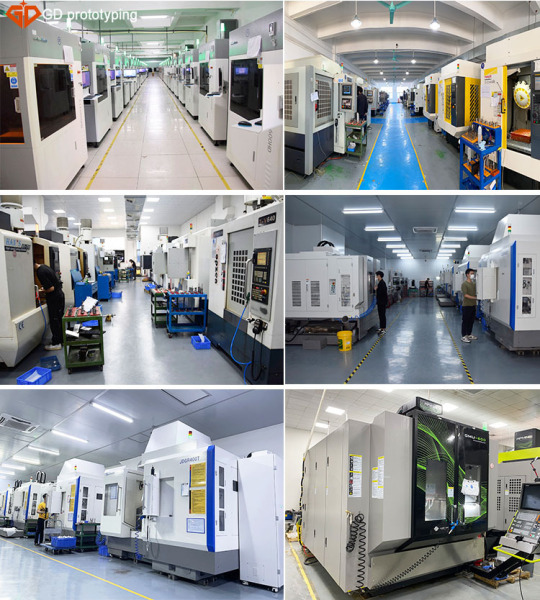
GD prototyping Our high tech rapid prototyping and production facilities include:
CNC Machining
Additive Manufacturing
Vacuum casting (cast urethanes),
Sheet metal
Rapid tooling and injection molding
Die Casting
Traditional model making and a range of finishing techniques
#cncmachining#cnc machining services#5 axis machining#cnc machining#prototyping#cnc milling services#cnc machining parts#GD prototyping#Rapid tooling
0 notes
Link
Getting high-quality and low-cost parts are very tough now to find in Georgia. For this reason, Ideal Machined Components is providing CNC rapid prototyping services to customers. With our state-of-the-art equipment and experienced staff, we can quickly turn your ideas into reality. As the best CNC turning company, the CNC machines are equipped with all the bells and whistles, so you can be sure that your parts will be accurate and durable.

0 notes